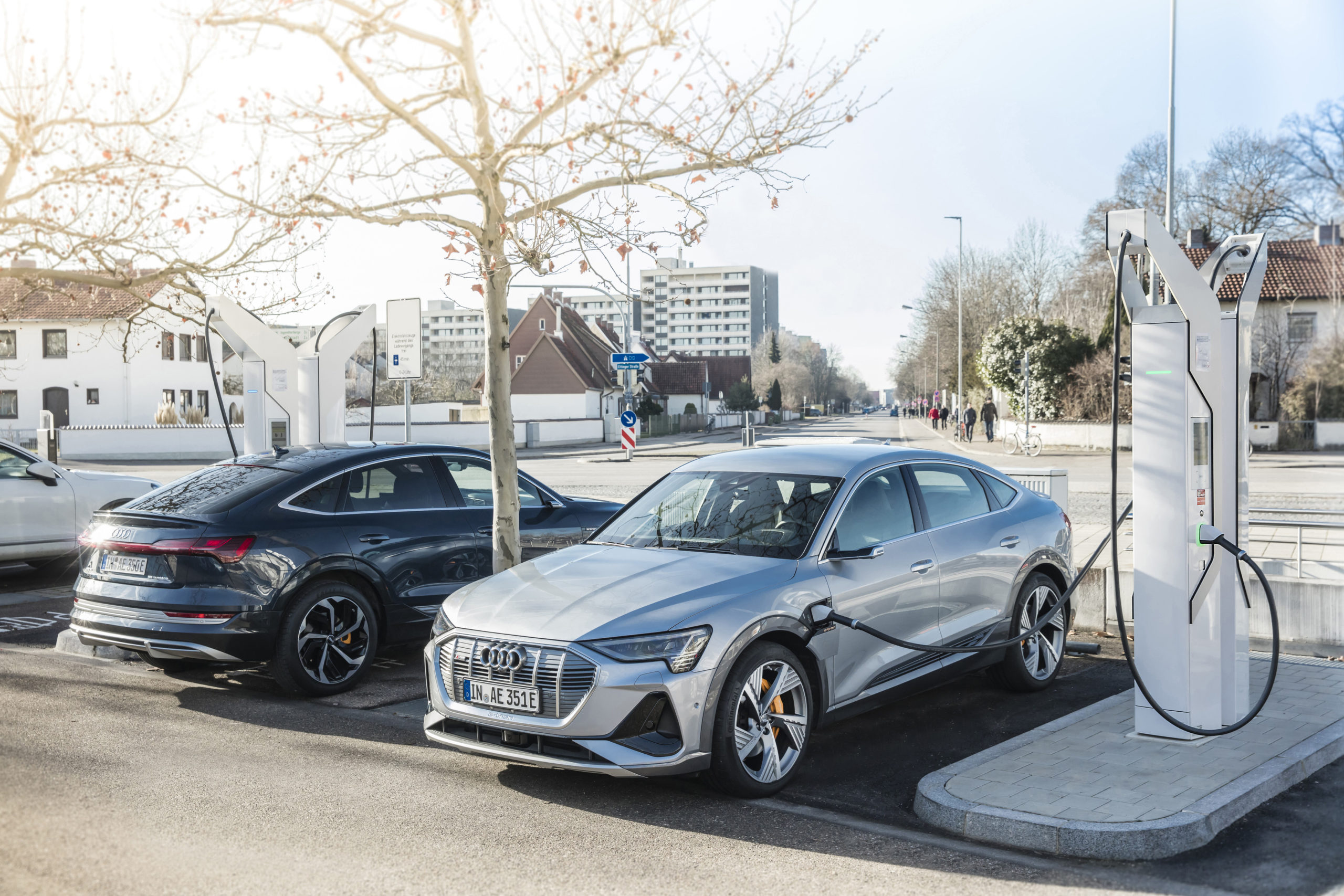
Audi invests around EUR 100 million in charging infrastructure at own sites
On its journey to becoming a provider of entirely CO2-neutral premium mobility, Audi is making excellent progress at its own sites. By the middle of 2022, the premium brand will equip one in ten parking spaces with a possibility to charge electric cars, most of which will be accessible to the public.
This independent concept is the largest charging infrastructure project carried out by a German employer. The investment provides Audi with a head start in terms of setup and operation expertise for the hardware and software of such charging concepts while also allowing the company to pilot a new business area of mobility.
Audi is setting up more than 4,500 charging points for battery-operated vehicles, thereby contributing to the energy transition in private transport. “Establishing such extensive charging infrastructure is a completely new challenge,” Maximilian Huber describes his task. The project manager for site charging is not only in charge of building the charging points but also the energy manager and software provider for the comprehensive charging solution at the automotive manufacturer’s sites. At the main plant in Ingolstadt alone, there will be 3,500 charging points available in the final development. There will be 1,000 charging points in Neckarsulm, just under 100 in Brussels and Győr. Likewise, charging infrastructure will be built at the factory in San José Chiapa. The company already offers expansive charging capacities at the training centers at Munich Airport. The entire project has a total budget of up to EUR 100 million.
A charging concept on this scale is unique in Germany so far – and requires meticulous preparation and largely independent energy management. A separate project team has therefore been preparing and structuring the concept for the implementation since the middle of 2017. The fundamental decision to electrify ten percent of all parking spaces was already made a year earlier. “Such lead times are necessary because the planning and expansion of the energy supply on this scale alone takes multiple years,” explains Huber. Carrying out the setup during ongoing production at the locations is a particular challenge.
The project team is responsible for planning the entire strategy, investment, and concept, and manages the setup and operation of the charging infrastructure as well as the billing of charging procedures at the Audi sites. In this context, the charging points are expanded to suit the needs of the employees and other people using the parking lot, the charging infrastructure is designed accordingly, operating rules are set, and a hotline and support are provided. Recording that complies with calibration law and invoicing of the charging procedures are further important aspects.
At the sites in Brussels, Ingolstadt, and Neckarsulm, charging infrastructure with a total power input of 21 megawatts is already available. This corresponds to the power consumption of a small town with 14,000 inhabitants. This includes 600 charging points with an output of up to 22 kilowatts (kW) and 60 direct current charging points with an output between 50 and 350 kW. By the middle of 2022, there will be 4,500 charging points, each with an output of up to 22 kW, and approx. 50 more with an output of up to 350 kW each at the plant sites alone. A dynamic and intelligent load-management system will be controlling all power input across sites this year already, so the power connection does not need be expanded.
In addition, there is the equipment of the three Audi Training Center locations at Munich airport. Audi’s largest individual charging park with a power input of 2.1 megawatts is connected to the grid here. In connection with the construction of the new ATC IV building, the solar power generated is used for the charging procedure in combination with a battery buffer storage device. “It’s not just about energy supply, though,” says Huber. The project team has also created its own navigation map on the basis of Google Maps that allows employees to see in real time where charging terminals are available. Invoicing via online systems and the integration in an internal settlement system are further important services.
In the medium term, it is being checked how to make the acquired expertise available to other companies that need to expand their charging infrastructure. This is the next step on the company’s journey from a pure automotive manufacturer to a mobility service provider. Audi has set itself the goal to become the leading CO2-neutral premium provider. By 2050 at the latest, the company’s operations are to be entirely CO2-neutral.

